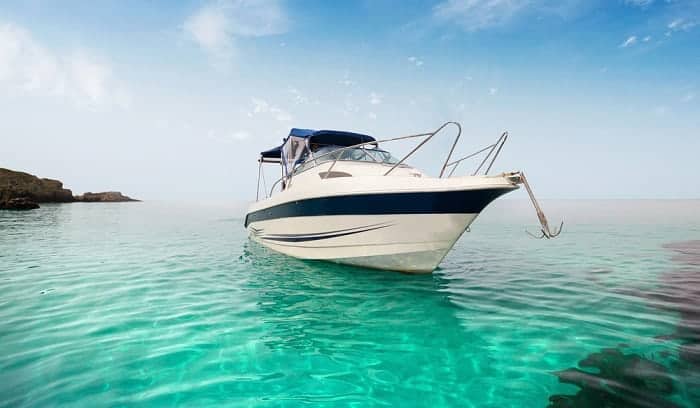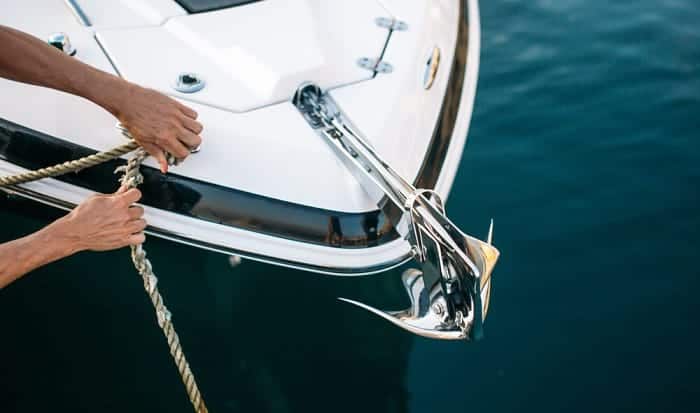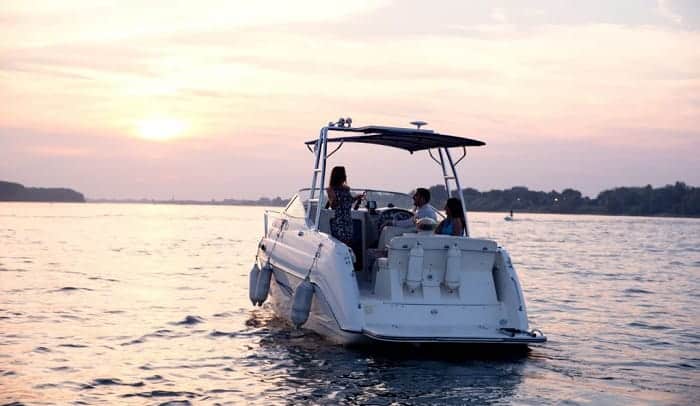It depends on the type you use, as anchors either use their weight or dig and grip onto the sea bed with their flukes. Some can do both thanks to their designs, but modern anchors tend to lean more towards bottom penetration.
This should briefly answer your question, “How do most anchors hold a recreational boat in place?” If you want to dive deeper into the factors and mechanics involved, then continue reading.
Table of Contents
How Do Most Anchors Hold a Recreational Boat in Place
We often attribute qualities, such as stalwartness and stability to anchors for good reasons.
Seeing them in action first-hand only cements their status as amazing inventions in their own way. Just look at how they keep vessels steady during a stormy day! Marvelous, right?
So, what’s the scientific sorcery behind it? Well, like other innovations, we have their designs mostly to thank. A fluke-style anchor holds a recreational boat in place with its two flukes.
Also called the Danforth, these boat anchors are a good choice for most recreational boats like Jon boats, fishing boats, and pontoons because they’re lightweight while offering incredible holding power. They can burrow and dig into bottoms like mud and sand and stay there for long periods. It’s relatively easy to stow them too.
How Do Danforth Anchors Maintain High Holding Power
Fluke-style anchors, especially the ones available in the market today, have excellent sea bed penetration. They may not do that well in grassy, clay, and rocky bottoms, but when it comes to sand and mud, especially sand, they’re a bonafide godsend.
These two types of bottoms provide the right amount of weight and resistance once a fluked anchor digs into them.
The combination and interaction of these elements are what allows these anchors to hold recreational boats in place. Accommodating power and stability increase the depth that the anchor penetrates in any given bottom.
Other Factors Come Into Play, Though
When discussing anchors and their ability to hold recreational boats in place, it won’t be right to focus solely on their flukes. We can’t ignore other important factors like the anchor rode.
The rode connects the anchor to the boat. How else would you be able to lower and raise your anchor? More importantly, how would the anchor, for all its strength, hold the boat in the first place? Never underestimate the rode you’re using.
With that said, the chain should also withstand or absorb the force produced, as a result of regular contraction and tension inherent in marine environments. Did you know that the conditions of the sea bed should dictate the kind of anchor rode you should use? These are the basic combinations used based on certain conditions:
- All-chain anchor rode: These are preferred when anchoring in corals and rocky floors. Overall, they’re stronger than most rodes, especially if we’re talking about high-test steel. They do tend to be heavier and thus, more challenging to handle. Another added benefit of all-chain rodes is incomparable durability.
- Nylon three-strand line: Many sailors choose this combination if they want better shock absorption when anchoring. True enough, this has never failed me when I moor my boat and have to deal with solid gusts or stormy conditions. Nylon also sinks relatively faster compared to other kinds of rope.
- Rope and chain mix: I like to use this because it protects all-rope rodes from abrasions. It is essentially combining the advantages of both rope and chain. That doesn’t mean that the disadvantages of both would be negated, though.
Keep in mind that you can always add an extra line of rope to your chain to boost the anchor’s ability to handle force. For example, the 75-meter chain I use will be able to keep my vessel from swinging and swaying if I add an 18mm rope line to it during windy days or when the tides are restless.
Please watch this video if you want to learn more about how much anchor line to use in certain conditions:
Another thing that we can’t overlook is the material that the anchor is made of. The kind you use dictates the anchor’s weight, strength, and durability, after all. Shifting our focus back to Danforth anchors, they are typically advertised as being composed of galvanized steel.
Almost anything made of that material has a higher rust resistance. It also aids in the reduction of the overall weight, which makes the anchor more manageable.
Below are two other materials that are commonly used on a lot of anchors.
- Aluminum: Though lacking the strength of stainless steel, aluminum has stellar rust resistance. It tends to be used in budget-friendly anchors.
- Stainless Steel: Besides its impressive corrosion protection, stainless steel anchors give more weight. As a result, they add to the total holding power. We also can’t deny the remarkable longevity of this kind of material.
Don’t Forget About The Wind Element
When anchoring during storms, strong winds take center stage. Did you know that the anchor holding power considerably dips if you do not release the right amount of rode? It may even dislodge the anchor if the wind’s strong enough.
What makes matters worse is that too much rode is bad news. The wind might displace your vessel, enough for it to hit a rock, the dock, slip or any object nearby! This is why balance is key.
It also won’t hurt to check if your anchor is firmly embedded. Moreover, take care of any part of your boat that can increase the windage. Once I have these two factors checked, I know that I can put 100% faith in my Danforth anchor even if I’m up against the freakiest storms.
“But, Wait! Shouldn’t I Be Using More Than One Anchor?”
If you’ve been boating, fishing, or cruising for a while, that’s probably a question you have in mind, particularly when discussing Danforth anchors. Well, you’re right! It’s best practice to carry two or more anchors with you, even when riding recreational vessels. After all, there’s no such thing as an anchor that “rules them all”.
1. Grapnel Rocks in Rocky Bottoms
I can also make a case for grapnel anchors when I’m out canoeing. They’re a favorite among Jon boat-riding fishing fanatics. One glaring downside, though: they’re not that great when it comes to holding power. Even so, they make for a great backup anchor since they work well with rocky bottoms, which are usually a fluke anchor’s weakness.
2. Claw Anchors for More Versatility
In the US, I’ve also encountered many recreational boaters that love the Claw or Bruce anchor. It’s a type of plow anchor that’s a notch above your common Danforth since it also does well in rocky bottoms. However, it can be quite a struggle to get it to bite sometimes, and to me, it’s slightly inferior to Danforth anchors in terms of holding power.
These make great substitutes for Danforth anchors, especially for recreationists like me. The two also rely on penetrating bottoms or the seabed when preventing recreational boats from being carried by the wind, waves, or outgoing tides.
Conclusion
Now that I think about it, there’s not much difference in how bigger commercial vessels and recreational boats rely on anchors to keep themselves in one spot.
Holding power is still dictated by the fundamental factors like weight, fluke, rode, materials of the anchor, and different marine conditions. When it comes to the role of keeping boats in place, though, most of the responsibility falls on the anchor and its various parts. Keep these in mind the next time you go casting. You also can apply this to anchor a pontoon boat.
Hope you enjoyed this guide on how do most anchors hold a recreational boat in place. Don’t forget to share this article with your friends and other boat lovers like us!

“I am James Harvey – founder of Boating Basics Online. It is established with the drive to help out first-time boaters, which are those desiring to explore their way through the water. So if you are new to boating, start from here with me. “



